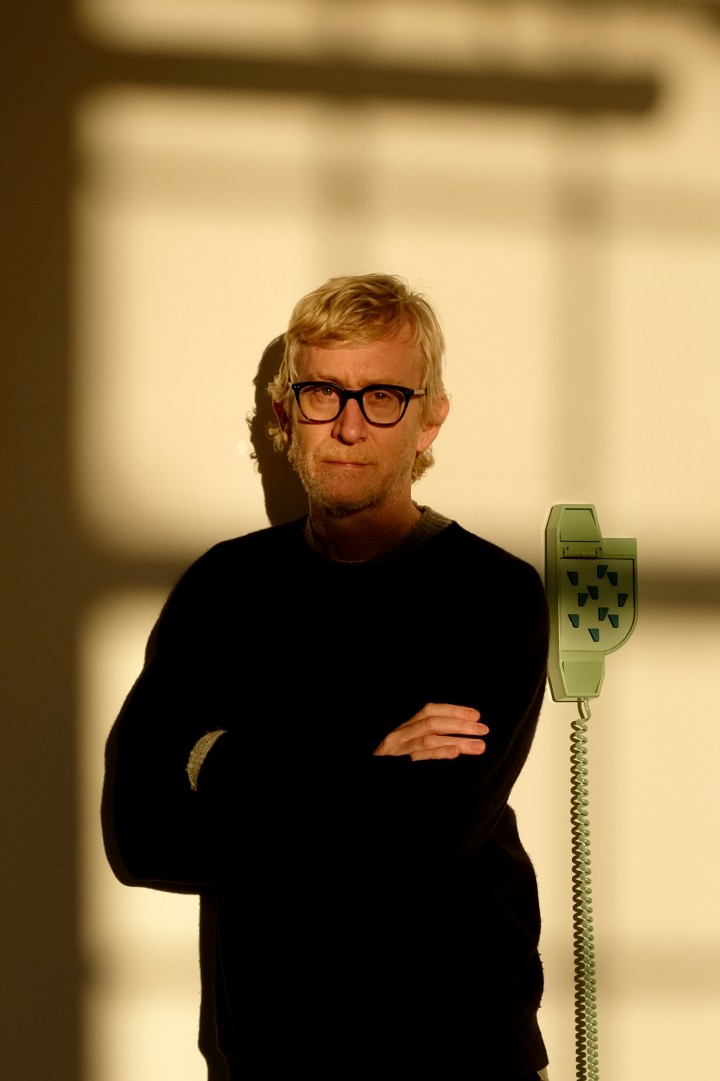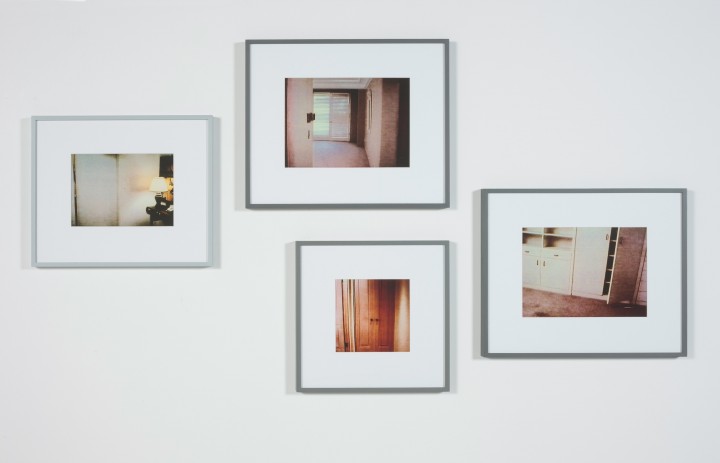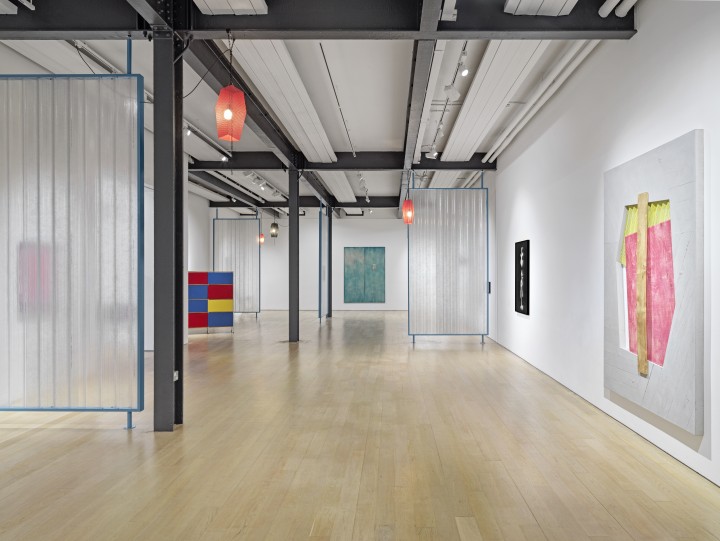Scottish Art News
Latest news
Magazine
News & Press
Publications
Interview: Martin Boyce
By Susan Mansfield, 23.04.2024

Martin Boyce’s work calendar reads like that of any other contemporary artist with an international career: an exhibition in Paris, a project in the USA, a teaching post in Hamburg. However, unlike many of Glasgow’s celebrated exports, Boyce - who won the Turner Prize in 2011 - continues to live in the city. And this year, for the first time in a long time, we can enjoy a broad selection of his work in a gallery in Scotland. Before Behind Between Above Below at the Fruitmarket brings together work from the last 30 years, most of which has never been shown in the UK.
“The idea was to gather some of my favourite works that had been made for exhibitions in Zurich or New York or Berlin or Los Angeles or wherever, and to give people here the opportunity to see them.” he says.
“I think, in a small country like Scotland, where maybe we don’t have the museum infrastructure, or the museums don’t have the money to do so many exhibitions and support artists in quite the way other countries do, you can feel slightly forgotten about. Part of me, if I’m honest, wanted to say, ‘Look! This is what I’ve been doing for 25 years!”
The exhibition is part of the Fruitmarket’s 50th anniversary programme - Boyce was one of the first artists to show in the gallery’s Visions for the Future series which platformed emerging Scottish artists in 1999. He graduated in 1990 from the Environmental Art course at Glasgow School of Art, and completed Glasgow’s celebrated MFA in 1997.
He has built an international reputation steadily: a solo show at Tramway in 2002, a large-scale commission for Munster Sculpture Project in 2007, representing Scotland at the Venice Biennale in 2009. He thinks of himself as a sculptor, “because I’m very interested in objects, how objects occupy space, how objects talk to other objects”, but (as an Environmental Art grad) is also deeply attuned to architectural space.
, 2017 (detail).jpg) Martin Boyce Dead Star (Reclining), 2017 (detail), image courtesy of the artist
Martin Boyce Dead Star (Reclining), 2017 (detail), image courtesy of the artist
On the light-filled upper floor of the Fruitmarket, he has installed a blossom canopy in powder coated steel, a work first made for the Museum of Contemporary Art in Toronto in 2022. He plays with the illusion of being outdoors, while emphasising the interiority of the space through bespoke moulding on the walls and a collapsed standard lamp, ‘Dead Star Reclining’, one of his favourite works, and perhaps the nearest he comes to suggesting the human figure.
By contrast, the gallery’s warehouse space gave him a chance to try an idea he has been mulling over for years: to show work in storage as if about to go out to an exhibition, or just recently returned. “I wanted to use that language of storage and warehouses because it relates to memory and the unconscious and this was the perfect place to try that out.”
‘A River in the Trees’, a large piece from his Venice Biennale show, is in one corner, the concrete slabs stacked, the waxed paper leaves in a cardboard box. It’s a stroke of genius: rather than try to recreate the installation, which was made for a decaying palazzo, he invites us to imagine it or (if we were there) recreate it in our memory.
Memory, dreams and the subconscious are key themes in his work despite its hard-edged modernist aesthetic. In 2019, he conjured a half-imagined, half-remembered tennis court in the grounds of Mount Stuart on the Isle of Bute (‘An Inn for Phantoms of the Outside and In’), which is now slowly being reclaimed by the surrounding forest.
 Martin Boyce, Interiors, 1992,4 Framed C-Prints., All images Courtesy of the artist and The Modern Institute/Toby Webster Ltd., Glasgow; Galerie Eva Presenhuber, Zurich/Vienna; Esther Schipper, Berlin/Paris/Seoul; Tanya Bonakdar Gallery, New York/Los Angeles. Photo: Ruth Clark.
Martin Boyce, Interiors, 1992,4 Framed C-Prints., All images Courtesy of the artist and The Modern Institute/Toby Webster Ltd., Glasgow; Galerie Eva Presenhuber, Zurich/Vienna; Esther Schipper, Berlin/Paris/Seoul; Tanya Bonakdar Gallery, New York/Los Angeles. Photo: Ruth Clark.
The oldest work in the Fruitmarket is ‘Interiors’, a series of photographs from 1992. They are screenshots from the 1985 film Jagged Edge, glimpses of empty rooms when no actor is in shot, which have an impending sense of threat. He smiles: “We had rigged up a colour printer to a VHS recorder so could pause the image and print it out. The printout was poor quality, the VHS was already poor quality, then I rephotographed the printout, so they were these degraded images, which lent them even more of a malevolent feel.”
 Martin Boyce Before Behind Between Above Below. Installation view, Fruitmarket, 2024. Photo: Stefan Altenburger
Martin Boyce Before Behind Between Above Below. Installation view, Fruitmarket, 2024. Photo: Stefan Altenburger
Boyce is very good at the sinister within the everyday, the ordinary object removed from its purpose: shelving units are boarded up, lights have no bulbs (or electrical connection), phone handsets have no numerals. His ‘Ventilation Grilles for an Apartment Building’, bearing the words Before, Behind, Between, Above and Below, transmit the uncanny sense that the walls are watching you.
But the sense of half-lost, half-remembered places, the conjuring of an elegiac, dream-like strangeness is also important. His 2002 installation for Tramway, ‘Our Love is Like the Flowers, the Rain, the Sea and the Hours’, did this, as did his work for Venice, and ‘Do Words Have Voices’, the haunted park made for the Baltic in Gateshead, for which he won the Turner Prize.
Another series of photographs, ‘Spook School’, were taken inside the Mackintosh Building at Glasgow School of Art in 2016 while it was being refurbished after the 2014 fire. Laid on packing blankets on a table, they capture another empty, evocative interior. While Boyce talks about them in the language of museums and storage, for anyone familiar with the building, largely destroyed by a second fire after these photographs were taken, they depict another kind of memory, another kind of haunting. At the opening, Boyce spotted former director of GSA, Dame Seona Reid, and warned her: “There’s a piece in there that might break your heart.”
What is remarkable about Boyce’s sculpture is that almost every work made since 2003 has been created using a specific lexicon of shapes derived from four concrete trees designed by brothers Jan and Joel Martel for the 1925 International Exhibition of Modern Decorative and Industrial Arts in Paris. After coming across a picture of one of the trees in a book, Boyce deconstructed the complex design into a serious of shapes which he began to use throughout his work; the maps and models of this process are being shown in the Fruitmarket for the first time.
He says: “There was a period when it was really strict what I felt I could do, what rules I followed. Over the years, I’ve allowed myself a bit more lea-way. I’ve developed a new pattern which is still derived from the three but it includes more curved shapes. But those shapes are still there for me when they’re useful.” However, he says that the audience don’t need to know the Martel trees or any of the other many and varied design and culture references in his sculptures, to enjoy them. “Sometimes there are very specific reference points which go into the work, but that doesn’t mean the work releases those quickly or in any legible way. “I think these things are embedded in the work and they are there to be read about and discovered and thought about over time. But, for me, it’s important that the work does not rely on those things, it can be accessed in other ways without that knowledge, there’s space for the viewer to explore.”
:: Martin Boyce: Before Behind Between Above Below, at the Fruitmarket Gallery until 9 June.




